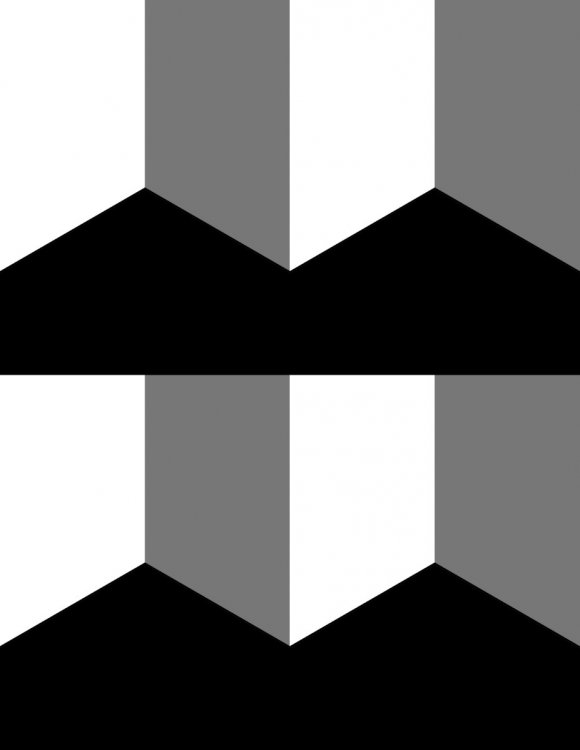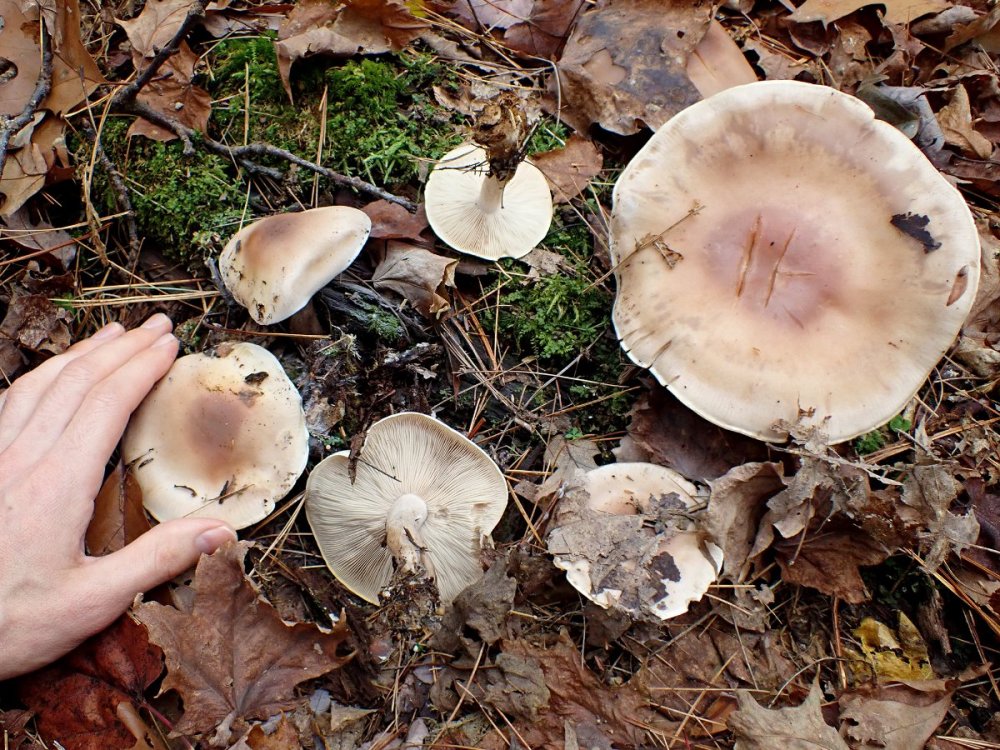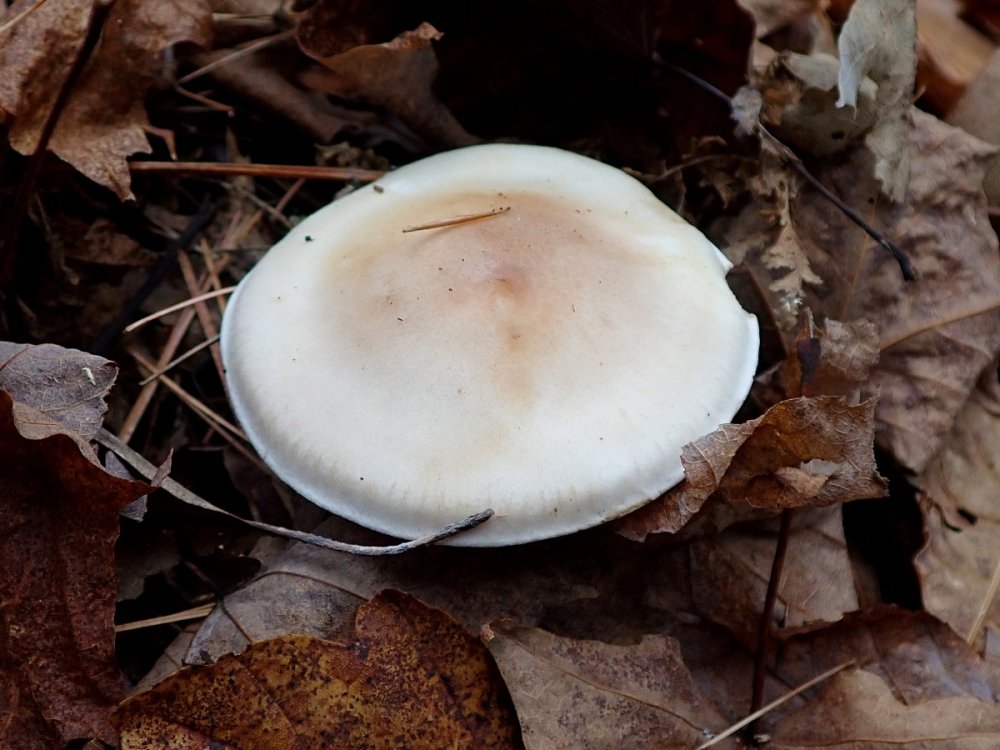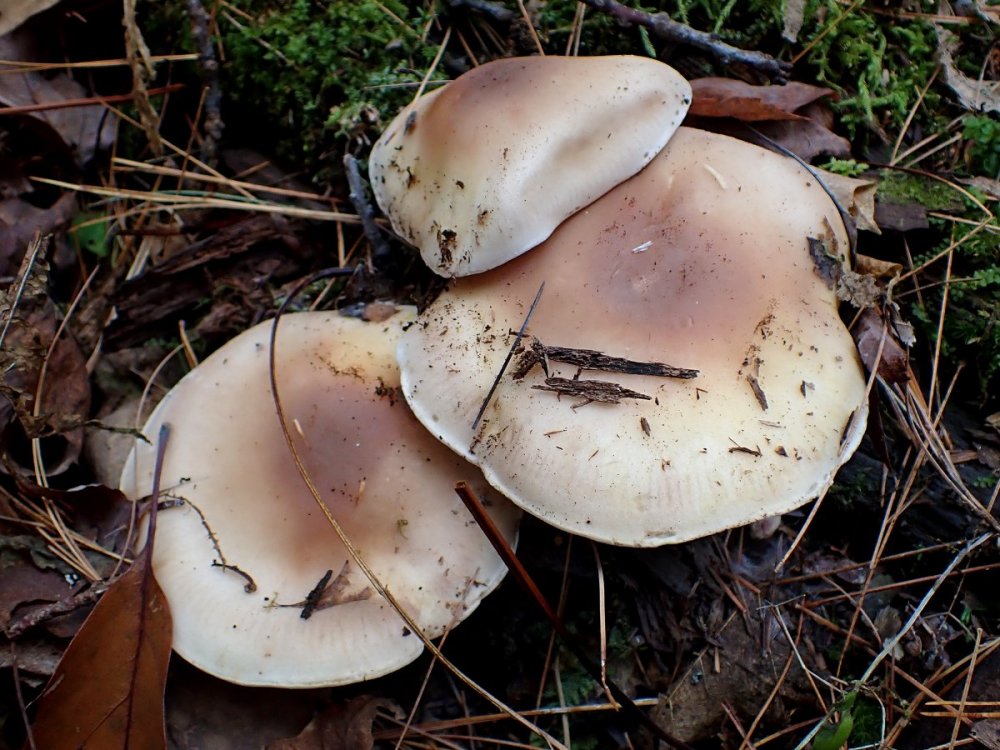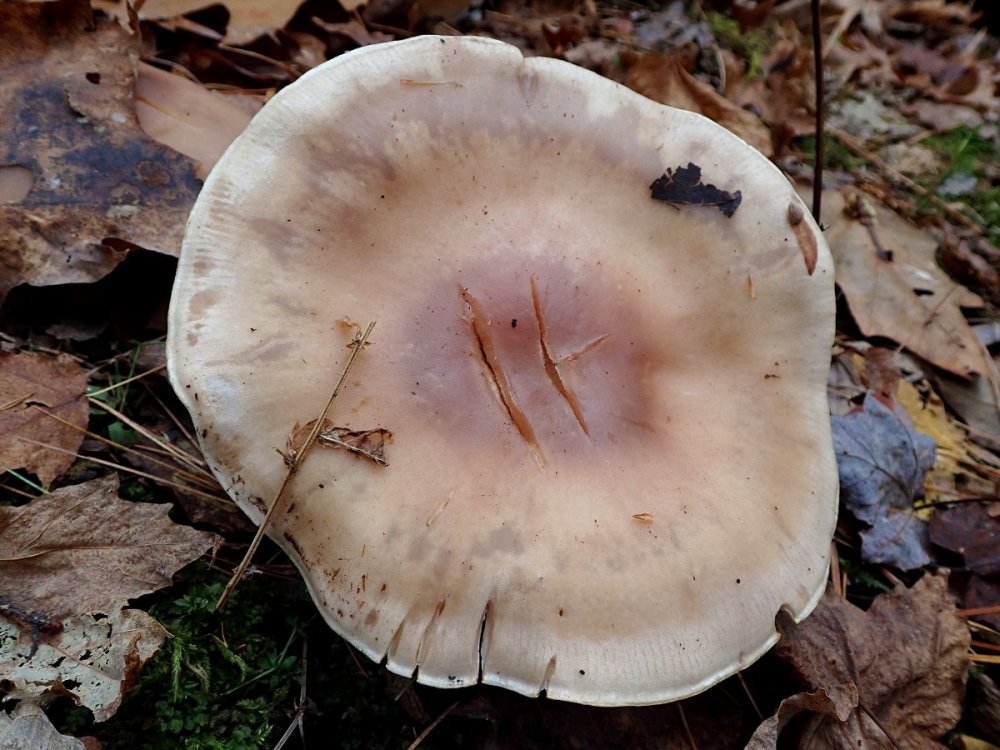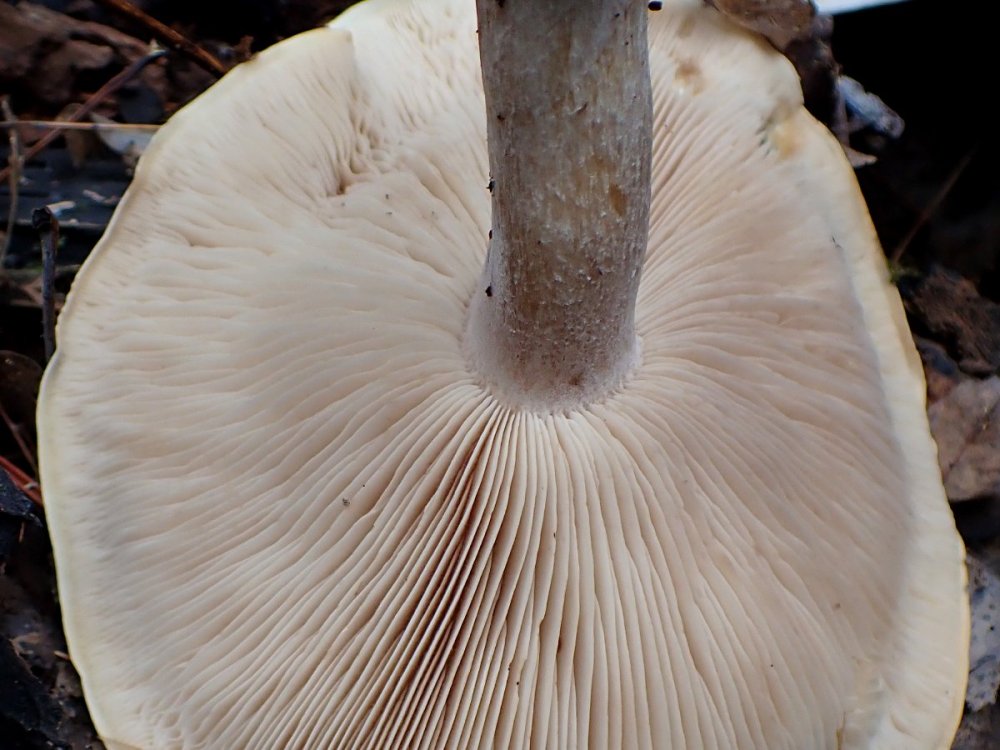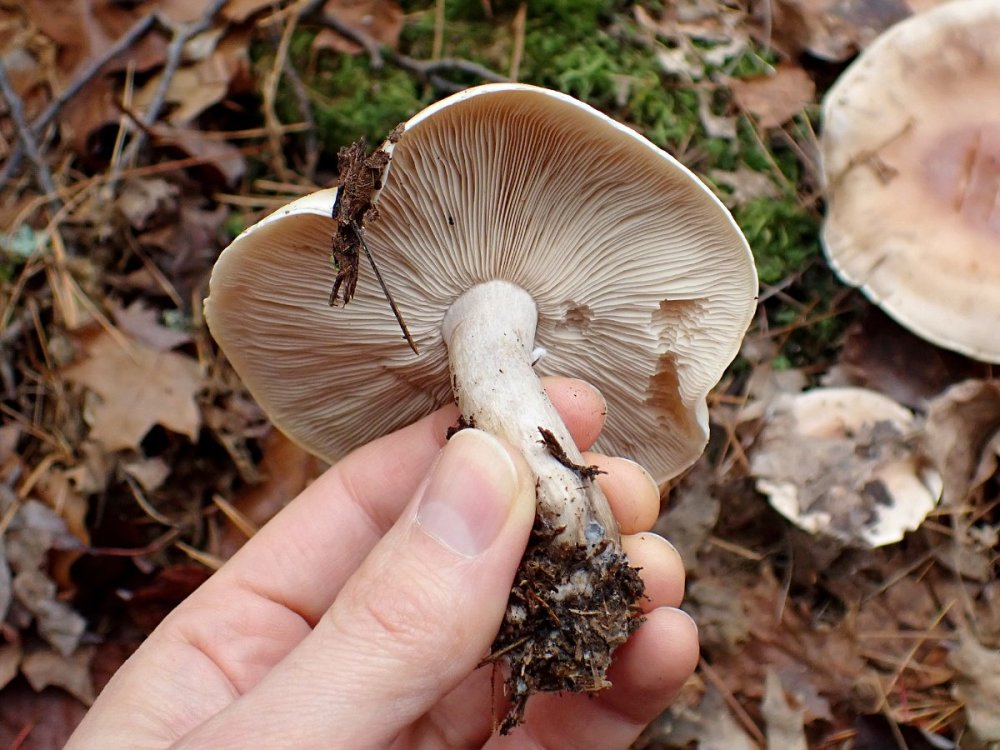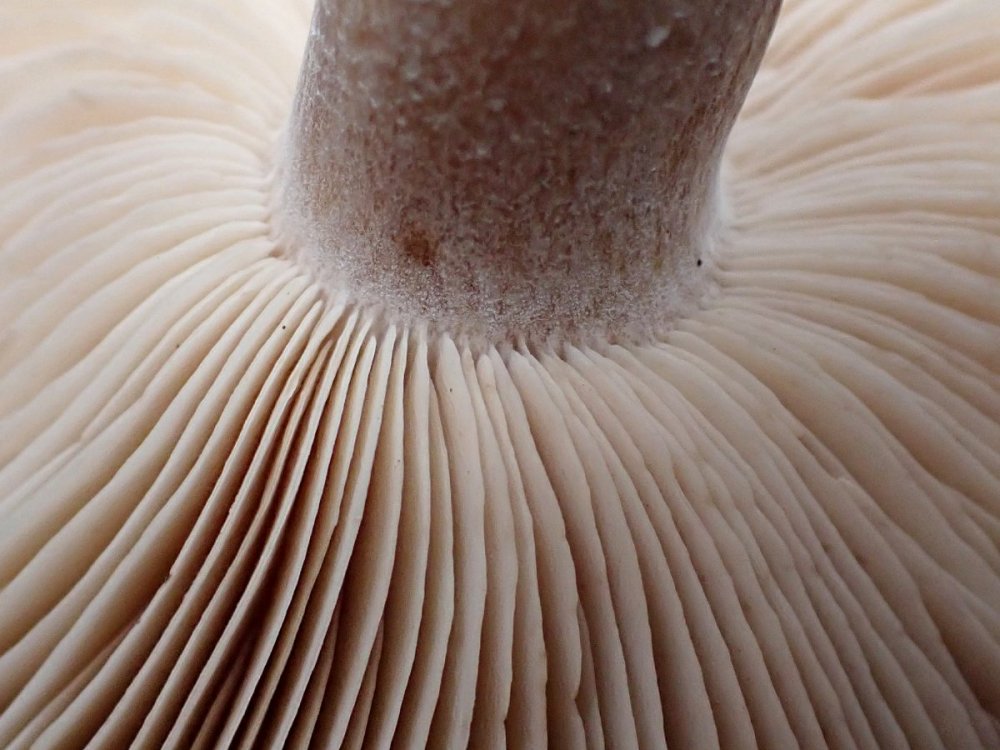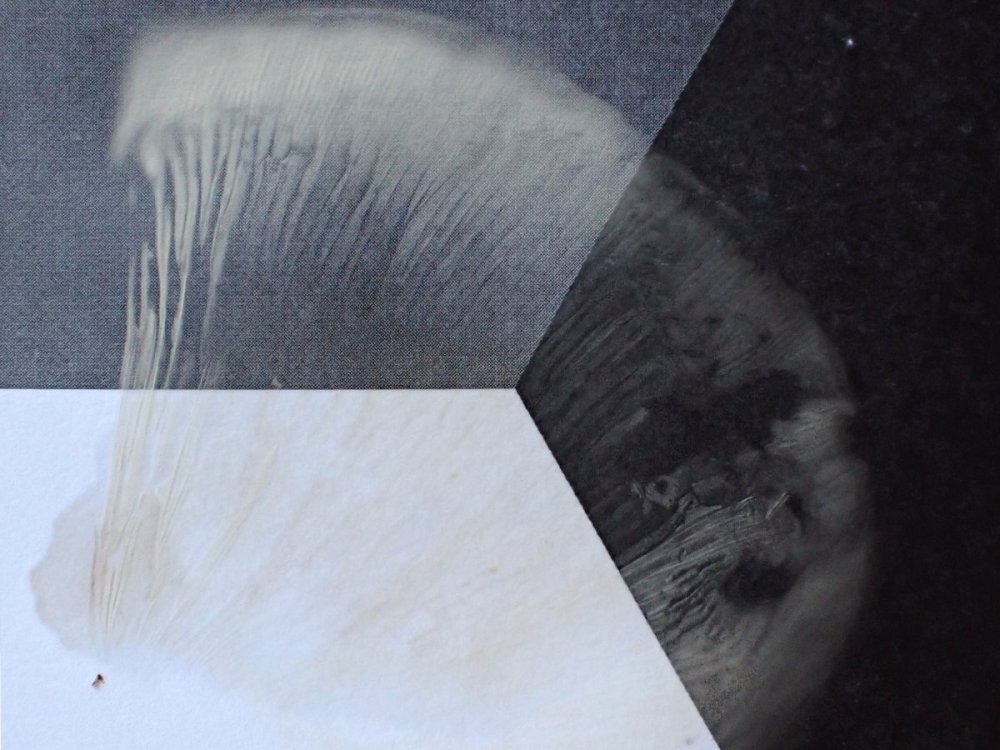-
Posts
43 -
Joined
-
Last visited
Profile Information
-
Gender
Male
-
Location
East-Central Vermont (Upper Valley)
-
Interests
nature, communication, music, art, food, movement, stillness
Recent Profile Visitors
1,052 profile views
Vermonter's Achievements

Pleurotus Junior Member (2/5)
-
Thank you Dave W! That's a species I hadn't encountered and it looks like a very good match.
-
I found this annual polypore with tough, rubbery flesh on Acer saccharum in east-central Vermont. Species I've looked at that bear some resemblance (but all seem to have certain traits that conflict to a greater or lesser degree in the areas of substrate, size, flesh consistency, coloration/staining, etc.) include: Aurantiporus fissilis, Sarcodontia spumea, Climacocystis borealis, and Leptoporus mollis. Please let me know if you have other ideas, or think one of the above suggestions seems likely.
-
I agree that the green to black slimy ones are quite unappealing--though it makes sense they might be enjoyed in Japan where slimy foods are much more appreciated. I was thinking more of those that are only slightly yellow. I have encountered ones that were a little yellow inside, but still firm (and could pass my squeeze test). I think I actually ate a few one time that had a slight yellow tint--and wasn't bothered by them, but I didn't have many. Honestly though, I'm not a big fan of the flavor of the little puffballs--these and Lycoperdon perlatum (I appreciate the flavor of the larger puffballs in the genus Calvatia more). I find the flavor of these to be a little sharp, with an off-putting note--sort of chlorine-like. I might like them better if they were breaded and fried, or in a well-seasoned dish, but I tend to prepare wild mushrooms very simply because I like to fully experience their inherent flavor.
-
halcyon1234 I have never tried to figure out how long these puffballs remain white after reaching their full size. I would guess it varies a lot depending on how warm the weather is. Wild guess--the window might range from less than a day in warm weather to a few days in cold weather. Regarding whether fruit bodies that have developed beyond the all-white stage would make you really sick--Dave W's comment above that they can cause indigestion is the conventional wisdom, and I have never challenged it. That said, I did once read somewhere that more developed puffballs are sometimes favored in Japan--so it's possible that the potential for GI distress is less than we think. Should you decide to experiment, it would be especially important to observe the usual advice for trying any new mushroom: start small and leave sufficient time for any adverse effects to manifest before gradually increasing the amount consumed. I get your pun about the "genius level"--and it is a hassle to try and keep up with the rapid changes in nomenclature these days--but I think it's truly amazing what has been learned through the powerful tool of DNA analysis. It has revealed some surprising kinships that were not even guessed at by scientists limited to the study of physical characteristics. It has also revealed that species thought to be close relatives are really not, and that the number of species in the fungal kingdom is much greater than previously thought--with apparently the vast majority yet unnamed.
-
Thank you Dave W! It may be that Lepista irina is the best bet for what I found. There was no hint of purple anywhere, even on the youngest fruit bodies. I was thinking that L. irina would be shaped more like the L. nuda specimens I have found, i.e. shorter stipes with bulbous bases and more strongly inrolled cap rims--but looking at what people call L. irina on MO, there's a lot of variation in these features. Regarding the spore print--the color of the liquid stain happens to be fairly close to the color of the spores. The spore print is definitely pigmented--though quite pale. I called it cream, but it seems that all these color names can mean slightly different things to different people. I think the tint is mainly toward yellow with perhaps just a hint of peach. Regarding the paper--I just use regular cardstock. I haven't had trouble before this with liquid stains--I guess this mushroom was wetter than most I've used.
-
-
halcyon1234 these get to full size while they are still white inside--they just don't stay white very long once they reach full size. With practice, you can get a fairly good idea of whether they will be white inside by giving them a little squeeze--the white ones will be firmer, and the ones that have progressed in development will be squishier. Apioperdon pyriforme is another name for this species which has come into use lately. Apioperdon was previously considered a subgenus of Lycoperdon (and before that of Morganella), but a 2017 study suggested it should be elevated to genus level: Vizzini, A. & Ercole, E. (2017)
-
I'm guessing this is a species of Clitocybe, but I'm not sure. I was looking at Clitocybe/Lepista irina, but I suspect that species should look more like C./L. nuda aside from coloration. The spore print is a cream color to my eye, though it's not all that different from a print I got last month from C./L. nuda--this is slightly paler and less peachy. There is some water staining on the lower part, but I think you can get the idea pretty well. The color of the spore print in the photo is fairly accurate, but not exactly true to life. The caps shown range from about 5.5 - 17 cm. The odor and taste are not distinctive to me. East-central Vermont, small clearing in a mixed forest (maple, oak, pine, etc.)
-
Dave W--I went out and located the sites again today. I had mis-remembered--there were actually 3 spots--2 different stumps. Photos 2&3 of the OP are the second spot, and 4&5 the third. I looked closely around the areas, and found a number of smaller puffballs growing terrestrially that I hadn't noticed yesterday. That seems like strong support for your idea of a terrestrial fungus that crawls readily up on wood. The fact that the ones on wood seem to have had a head start made me think that wood might be a slightly more favorable habitat for producing mushrooms--but now I'm thinking the different fruiting times resulting from multiple environments could be adaptive--allowing for a longer period of spore release. clamp connection--had you read that L. perlatum does not occur on wood, or did you assume it was normal?
-
That's interesting that Walt Sturgeon has agreed--I have the little book he co-authored, Mushrooms of the Northeast (2016), and it states that L. perlatum "grows from the ground" with the words in (green) boldface indicating a key identification feature. Interestingly all the specimens I saw with this appearance yesterday were on wood--and plentiful on that wood, with none on the surrounding ground. I was thinking this indicated that the species preferred wood as a substrate, but perhaps it is as you say--a terrestrial species crawling up to produce mushrooms--perhaps an adaptive measure to elevate the fruiting bodies for improved spore dispersal. I also wonder if this could be a separate unnamed species, macroscopically similar to L. perlatum but wood-inhabiting. If you learn anything from microscopic examination, I would be very interested to know. It sounds like you'll have material to work with, but should you need any more, I'd be happy to contribute from these sites if possible.
-
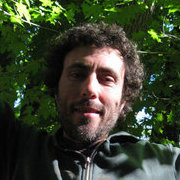
Hemileccinum subglabripes tasty? + unknown bolete
Vermonter replied to systemslib's topic in Identifying Mushrooms
I found some boletes in central Vermont recently that I consider Hemileccinum subglabripes. This was an especially nice, bug-free specimen. I found them quite tasty--just a hint of tartness balanced with sweetness. -
Photos 2-5 are all from different parts of the same stump--possibly hemlock, as it was adjacent to a standing hemlock. The third photo you mention probably is one of the a younger ones, and I believe is a close-up of one in the second photo. The first photo is from a recumbent piece of rotten wood at a different site in the same general vicinity. If these are indeed L. perlatum, I'm finding it strange that there is such a consensus (aside from the messiah.edu description) that it only occurs terrestrially. It's clear that these specimens I found were not just near the wood--they were inhabiting it, and not extending onto nearby ground. I was focusing mostly on getting close-ups, but here are two additional, slightly wider views of the two locations.
-
Most sources say Lycoperdon perlatum occurs on the ground period. However, at least one source (https://www.messiah.edu/Oakes/fungi_on_wood/puffball%20and%20cushion/species%20pages/Lycoperdon%20perlatum.htm) says it can occur on well-decayed wood--and I believe it, because I found a number of specimens today that really look like L. perlatum to me, and were on decayed wood. I have seen people identify puffballs that look like this as L. pyriforme because they were on wood, however, specimens I have found that I believe to be L. pyriforme have been browner and smoother--if they had spines at all, they were smaller and softer-looking. I'm wondering if there are any other species besides the two I've mentioned that these could be. Hartford, Vermont
-

Distinctively floccose wood mushroom
Vermonter replied to Vermonter's topic in Identifying Mushrooms
Thank you for your guidance, Dave W. I haven't found much about Psathyrella gossypina, but Psathyrella delineata is certainly widely documented, and looks like a good candidate. As you mentioned, the caps of my specimens have little wrinkling, and the slender stems also seem atypical of P. delineata. I imagine both of those characteristics could be variable--there is certainly a good deal of variability in the appearance of postings on Mushroom Obeserver with P. delineata proposed. I will keep an eye out for other Psathyrella species as well. -
Found in east-central Vermont on rotten wood of unknown variety. The cap of the largest was about 5 cm in diameter. The stipe of the one I collected was quite fragile.














